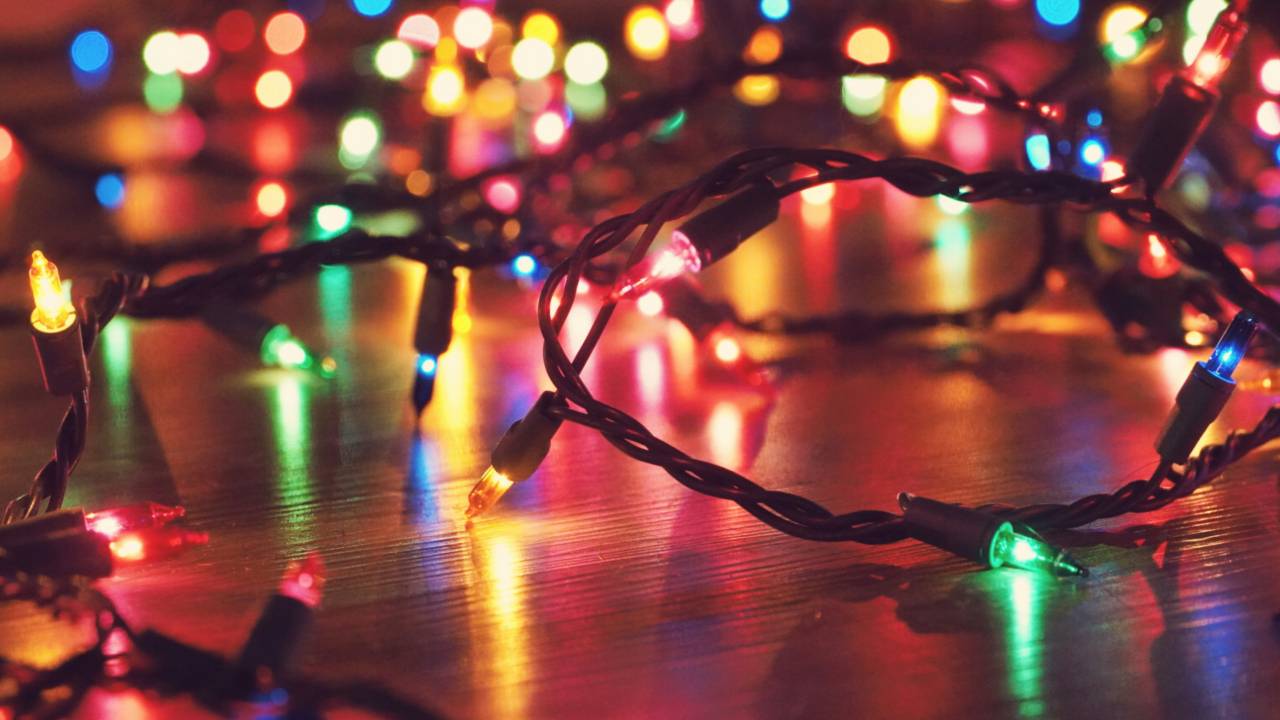
‘May your days be merry and bright’ and your energy bills low with these Christmas light money-saving tips. During December, almost every house down your street will be beautifully decorated with twinkling lights, tacky tinsel and festive baubles. But the cost of those Christmas lights might not leave you feeling so joyful after the holiday season.
The cost of living crisis hasn’t eased up this year, and with Christmas right around the corner, purse strings are tighter than ever. Whether you have multiple fairy lights around your tree or a full light display outside your house, Christmas lights can be energy draining and cause your bills to skyrocket.
According to recent statistics, households in the UK are set to collectively spend £129 million on Christmas lighting this year. After calculating the average use of Christmas lights and multiplying energy usage and electricity costs by the average number of days Brits have their decorations up, calculations show that the UK's Christmas lights collectively consume 379.7 kWh of electricity. This is equivalent to the annual energy consumption of over 140,000 households.
To avoid spending too much on your energy bills this December, energy experts have revealed seven handy tricks to help you save money on your Christmas lights while keeping your home festive and illuminated.
1. Upgrade to LED / smart Christmas lights…
This Christmas, replace your old Christmas lights with LED or smart lighting. Catherine Storer, energy expert and executive director at ESS recommends LED lights as they’re “not only more energy efficient, consuming up to 75% less energy than traditional bulbs, but they also have a longer lifespan.” Making this switch reduces the costs of your energy bills and how often you need to replace your lights.
Similarly, switching to the best smart bulbs is more cost-effective than traditional Christmas lights. Smart lighting tends to use less electricity and have apps which give you more control and customisation of your lights. Many smart home brands are coming out with their own smart Christmas lighting, like the Philips Hue Festavia and the Nanoleaf Matter Smart Holiday String Lights, both of which are festive, fun and deliver different colours and settings via their apps.
2. …Or use battery powered lights
If you don’t want to plug your Christmas lights into a socket, you don’t have to if you choose battery-powered Christmas lights. With Christmas coming up, you’re bound to need a stash of batteries at hand, especially if you have young kids who will be getting new toys. Using battery-powered lights means you’re not using electricity from the mains power supply so you’re completely cancelling out this extra cost on your energy bills. This is also helpful if you’ve set-up your tree in a room that has limited plug sockets.

3. Pick solar powered lights for outdoors
If you’re decorating the outside of your house for Christmas, opt for solar powered lighting. While winter is typically cloudy, there are bursts of sun and brighter skies which your Christmas lights can take full advantage of. Using solar-powered lighting doesn’t affect your energy bills and you don’t have to rely on long cables or being near an electrical outlet, so you can set-up your lights wherever you want.
4. Be selective with your light settings
Depending on the settings you choose, you could save extra money on your Christmas lights. According to Which, coloured and white lights are typically the same price to run, but it’s the model and chosen setting which could be a hidden cost. Flashing and slow fading lights tend to be more cost-effective than having the same colour on at all times.
5. Schedule your lights with timers
Storer from ESS recommends scheduling your Christmas lights on a timer to keep your costs down. “By setting timers, you can make sure that your decorations light up only during the peak viewing hours, typically from dusk till your bedtime. This simple step avoids energy wastage during the late-night hours when fewer people are likely to enjoy the displays." Most Christmas lights come with timer options, but if you have smart Christmas lighting, you can set up schedules and routines on the app.

6. Keep your lights off until the evening
For both indoor and outdoor Christmas lighting, be selective about when your lights are on. In general, you don’t need to have them on during the day, overnight or when you’re out of the house. Christmas lights, especially on the outside of your home, look better in the dark as the natural daylight washes them out and makes it hard to see them. For the perfect festive atmosphere, wait until the evening to turn on your Christmas lights as this cuts down on electricity usage. Storer also mentions that to further lower your energy bills, turn off any lights in your home and “rely on the glow of your Christmas decorations in the evenings" instead.
7. Limit the amount of lights you have out
It’s easy to go overboard with Christmas decorations but having an elaborate display in every room of your home is going to be expensive. You don’t need to cover your entire house with lights, especially not in rooms that you don’t spend a lot of time in. Instead, prioritise your most commonly used room and adorn it with lights, tinsel, baubles and more. You’ll be grateful that you dialed it back when your monthly energy bill arrives!







